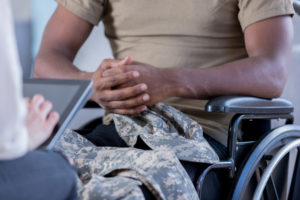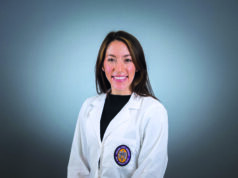
In May 1945, President Harry Truman appointed Gen. Omar Bradley to lead what is now the United States Department of Veteran Affairs, with Paul Howley, MD, as chief medical director and orthopedic surgeon Paul Magnuson, MD, as his aide.1,2 Colloquially, most people call it simply the VA, for Veterans Administration.
Magnuson’s vision was that each VA hospital should be closely affiliated with a medical school.2 This idea served three important purposes: to give veterans the best access to cutting-edge therapies, to bring federal research dollars into universities, and to establish comprehensive and replicable training programs for U.S. medical school graduates.1,3 With the passage of Public Law 293, the VA Department of Medicine and Surgery was created and the marriage between academic medicine and the VA was born.
Today, more than 70% of U.S.-trained physicians will have received at least a part of their training at a VA medical center, and 154 VA facilities are affiliated with 149 allopathic and osteopathic medical schools.1,3 With a population that skews toward older and medically complex patients, this experience has been instrumental and beneficial for surgical training across subspecialties.4-7
In 2020, the Society for Vascular Surgery (SVS) VA Vascular Surgeons Committee surveyed vascular surgeons practicing within the VA system about their work environment, including their role in surgical education. The vast majority (89%) of surgeons endorsed working in a facility affiliated with an academic medical center; most (76%) practice in a complex/ high-acuity hospital environment; and 52% have regular access to a hybrid room. Importantly, 42% of respondents work with integrated (0+5) vascular surgery residents, and 54% work with vascular surgery fellows.
The VA’s commitment to clinical training is coupled to programs for resident and fellow professional development. The one-year Chief Resident in Quality and Patient Safety (CRQS) and two-year VA Quality Scholars (VAQS) programs provide comprehensive training in quality improvement and patient safety. For those with broader interests in non-biologic sciences, healthcare research and health policy, the two-year National Clinician Scholars Program (NCSP), in collaboration with the Robert Wood Johnson Foundation, is available.
Given that more than half of VA vascular surgeons are involved with training future vascular surgeons, and the VA’s training opportunities for healthcare research, the many vascular pathologies, procedures and patient stories encountered by vascular trainees will no doubt play an integral role in the development of the next generation of specialists.
- Burns R., Lafave B., Clinard K. VA: The Human Cost of War. Public Broadcasting Service. 2017. Accessed June 1, 2021.
- Guernsey, J.M. The Veterans Administration and Surgical Education in the United States. Arch Surg. 1989;124(4):407.
- Dell’Italia L.J. Impact of VA Research on Health Care for All: Contributions Over Nine Decades and Counting. Circ Res. 2017 Jun 23;121(1):16–18.
- Poteet S., Tarpley M., Tarpley J.L., Pearson A.S. Veterans Affairs general surgery service: The last bastion of integrated specialty care. Am J Surg. 2011 Nov;202(5):507–10.
- Bakaeen F.G., Stephens E.H., Chu D., Holman W.L., Vaporciyan A.A., Merrill W.H., Grover F.L. Perceptions regarding cardiothoracic surgical training at Veterans Affairs hospitals. J Thorac Cardiovasc Surg. 2011 May;141(5):1107-13.
- Lanigan A., Spaw M., Donaghe C., Brennan J. The impact of the Veteran’s Affairs Medical System on an otolaryngology residency training program. Mil Med. 2018 Nov 1;183(11–12):e671-e675.
- Ravin A.G., Gottlieb N.B., Wang H.T., et al: Effect of the Veterans Affairs Medical System on plastic surgery residency training. Plast Reconstr Surg. 2006; 117(2): 656–60
Colleen P. Flanagan, MD, is a second-year vascular surgery resident at the University of California, San Francisco. Warren J. Gasper, MD, is a member of the VA Vascular Surgeons Committee.












